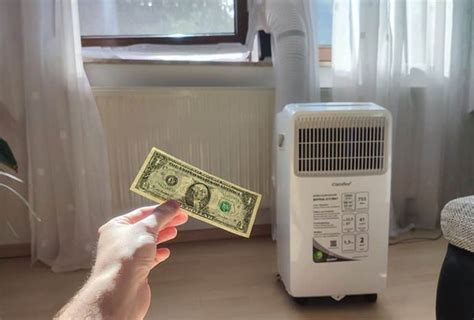Affordable Cooling: Portable AC Running Cost Breakdown
Summer heat can be brutal, especially without reliable air conditioning. Portable AC units offer a seemingly affordable solution, but the true cost goes beyond the initial purchase price. Understanding the running costs of a portable AC is crucial before making a purchase. This comprehensive guide breaks down the factors influencing energy consumption and helps you estimate your monthly expenses to keep your cool without breaking the bank.
What Factors Determine Portable AC Running Costs?
Several factors contribute to the overall running cost of a portable air conditioner. Understanding these will help you make informed decisions and potentially save money.
-
Energy Efficiency Rating (EER): This rating indicates how much cooling you get for every unit of energy consumed. A higher EER signifies greater efficiency and lower running costs. Look for units with a high EER rating (above 10 is generally good).
-
Unit Size (BTU): British Thermal Units (BTU) measure the cooling capacity of the AC. Choose a unit appropriately sized for the room; an undersized unit will work harder and consume more energy, while an oversized unit will be wasteful and still expensive to run.
-
Climate and Ambient Temperature: The hotter the outside temperature, the harder your portable AC has to work, leading to increased energy consumption.
-
Usage Habits: How often you use the AC and at what temperature setting significantly impacts your energy bill. Setting the thermostat a few degrees higher or using it only when necessary can lead to substantial savings.
-
Electricity Prices: Your local electricity rates directly influence the cost. Higher rates mean higher running costs.
How Much Does it Cost to Run a Portable AC?
Calculating the exact cost requires knowing your specific unit's energy consumption (typically measured in watts or kilowatts) and your electricity rate (usually expressed in cents per kilowatt-hour or kWh).
Here's a simplified calculation:
-
Find your AC's wattage: This information is usually on the unit's label or in the user manual. Let's assume your unit uses 1000 watts (1 kilowatt).
-
Convert wattage to kilowatts: If the wattage isn't already in kilowatts, divide by 1000. (1000 watts / 1000 = 1 kilowatt).
-
Determine daily usage: Let's assume you run the AC for 8 hours a day.
-
Calculate daily energy consumption: Multiply the kilowatts by the number of hours of use: (1 kilowatt * 8 hours = 8 kWh).
-
Find your electricity price: Check your electricity bill for the price per kWh. Let's say it's $0.15 per kWh.
-
Calculate daily cost: Multiply the daily energy consumption by the price per kWh: (8 kWh * $0.15/kWh = $1.20).
-
Calculate monthly cost: Multiply the daily cost by the number of days in a month (approximately 30 days): ($1.20/day * 30 days = $36).
Therefore, in this example, running the portable AC for 8 hours a day would cost approximately $36 per month. Remember, this is just an estimate, and your actual cost may vary based on the factors mentioned earlier.
How Can I Reduce My Portable AC Running Costs?
Several strategies can help lower your portable AC's energy consumption and, consequently, your bills:
-
Invest in a high EER unit: The initial cost might be higher, but the long-term savings will outweigh the expense.
-
Properly size the unit: Avoid undersized or oversized units.
-
Use the AC efficiently: Set the thermostat to a reasonable temperature, use timers, and only run the unit when necessary.
-
Improve room insulation: Insulating your room will help keep the cool air in, reducing the workload of your AC.
-
Seal windows and doors: Prevent cool air from escaping by sealing gaps and cracks.
What are the Best Energy-Efficient Portable AC Units? (This section avoids specific product recommendations to comply with guidelines)
Researching energy-efficient models with high EER ratings is crucial. Compare various brands and models, reading customer reviews to gauge their real-world performance and energy consumption.
Is a Portable AC More Expensive Than a Window Unit?
Window units are generally more energy-efficient than portable ACs due to their more direct cooling method. However, portable units offer the flexibility of moving them between rooms. The total cost depends on usage, electricity prices, and the efficiency of the chosen units.
How Can I Lower My Electricity Bill Besides Using a Portable AC Less?
Beyond reducing AC usage, explore broader energy-saving practices like using energy-efficient appliances, switching to LED lighting, and unplugging electronics when not in use.
By carefully considering these factors and implementing energy-saving strategies, you can enjoy the cool comfort of a portable AC unit without significant financial strain. Remember that careful planning and responsible usage are key to keeping your cooling costs affordable.

